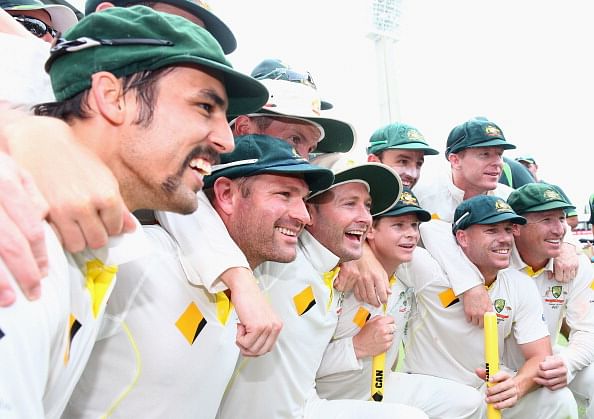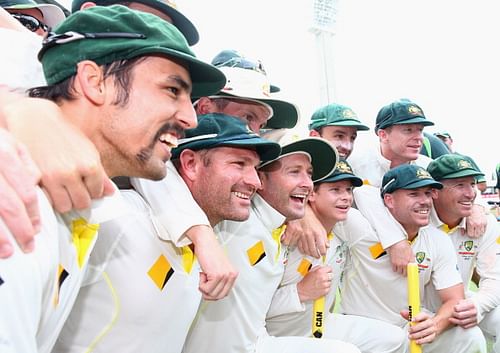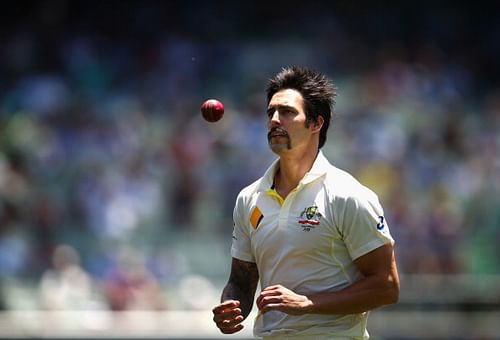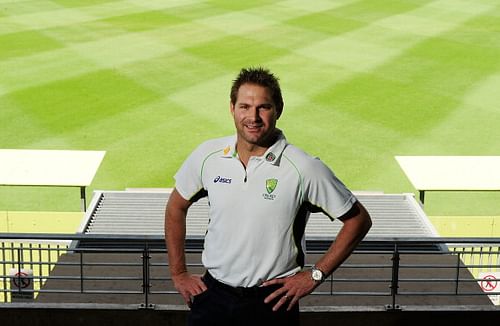
India tour of Australia 2014: SWOT analysis of Australian cricket team

The build-up to a much-awaited Test tour barely a couple of months before the World Cup could not have been more tragic. What was supposed to be a series oozing with Australian aggression against Indian perseverance has now lost much of its excitement following the catastrophic demise of Phillip Hughes on November 27 owing to an on-field injury.
Yes, bouncers will be bowled and the story should and will go on. But will the Mitchell Johnsons pitch it short with the same amount of venom and hostility that they would have if the world had been different?
The hesitancy and emotional turbulence is sure to crawl in, more so for the home team who have lost one of their most talented prodigies to the cruelest ironies of fate.
Perhaps, the best homage that Michael Clarke’s boys can pay to their dear Hughesy is by winning the series cleanly and comprehensively. And though that may sound easy, in the realm of reality, it hardly is, considering the manner in which they were tamed at Abu Dhabi by Pakistan a month ago.
Yet, the Australians may take heart from the reminiscences of the previous tour where they humiliated a submissive Indian team 4-0. As 11 baggy greens take the field on December 9, they’ll play for not only their country, but also for their friend whose posthumous aura shall loom over the 22 yards at Adelaide.
A SWOT (Strength-Weakness-Opportunity-Threat) analysis of the Australian team follows.
Strengths

On paper, the bowling department outscores the batting. Mitchell Johnson hasn’t looked his best ever since his resurgence against England in the last Ashes. The mustached assailant has been precise and methodical in his line and length while refusing to compromise on the speed-o-meter on a persistent basis.
He was the lone warrior who looked venomous with his penetrating swing on docile tracks of the Arab Emirates.
Home series is always a treat for Australian speedsters who love to hit the deck and garner pace with minimal movement. While the sharp bounce along with the angle across the batsmen (Johnson being a left-armer) tends to be the undoing of the Indians who have an almost genetic propensity to chase balls outside the off, Peter Siddle’s stamina, Ryan Harris’s work-ethic and Shane Watson’s all-around abilities have tested many a side in recent past.
The fairytale rising of a belligerent batsman in David Warner provides Australia the much-needed stability at the top. 2706 runs in 32 tests at a strike rate of 73.79 with a century and a fifty in his last two matches are no meager statistics for an opener who had to wait almost 3 years after his ODI debut to break into the Test side.
The belligerence, however, makes Warner susceptible to awkward dismissals, unlike a Steven Smith or a Mitchell Marsh who would grind it out in the middle and play to the merit.
Smith has been a reassuring name lower down the order since his resilient 92 against India in Mohali 2013. His ability to absorb pressure and stay unfazed in crunch situations is what makes him an indispensable part of the playing XI.
The patient work of Mitchell Marsh in his debut Test series where he emerged as the third leading run-scorer for Australia with scores of 47 and 87 in Abu Dhabi has not gone unnoticed as he now finds himself in a tussle for the No. 3 spot with Shane Watson, who had missed the Pakistan series due to injury. The possibility of both featuring in the same team does not stand unrealistic; however, the instance of Australia taking the field with effectively two medium pace all-rounders is unforeseen.
Weaknesses
Weaknesses are bound to exist for even the strongest of teams, but chances are they’d remain unacknowledged when playing at home.
Considering the limitations of the Indians, with a fairly inexperienced squad, against pacers on fast tracks having little time to adapt now that their tour matches have been cancelled, there’s hardly any chance that Australia would fancy being the weaker side on the field.
Yes, they were miserable against Pakistan; their batting was, to be polite, below average; and their bowling too poor to pick up 20 wickets. The batsmen hesitated, fumbled and fell through in a heap against spin. The bowlers, although economical, lacked discipline and sprayed deliveries all over the pitch.
No such adjusting troubles are about to creep up against India though. The advantage visibly lies in favour of Michael Clarke’s men, and the gravest predicaments that may arise include collective batting failure or dearth of incisiveness in Johnson, Harris and Siddle – assumptions, that are pretty far-fetched.
The fact that two of their chief batsmen and a workhorse in Ryan Harris are returning from injuries and their subsequent requirement of time for adjustment at this level can be potential Achilles’ heels, but for even that to happen, the rest of the team needs to fail as piteously as they did against Pakistan.
Opportunities
The opportunities are plenty. Post Ponting era, Australia have tried a number of batsmen at No. 3 – Shaun Marsh, Usman Khwaja, Phillip Hughes, Rob Quiney, Ed Cowan and Shane Watson. Only Watson, among them, boasts of respectable figures – 749 runs in 19 innings at an average of 41.61 with two Ashes centuries at The Oval and WACA last year.
Returning from an injury scare, Watson will be keen to make a mark in his first long fixture since the third Test against South Africa in Cape Town in March. So will be skipper Michael Clarke, whose mindless race against time has done nothing but upset the selectors. It is, therefore, a matter of paramount importance for Clarke to shepherd his team in the right direction.

The return of Ashes hero Ryan Harris following his knee surgery that involved removal of floating bones may delay the debut of New South Wales pacer Josh Hazlewood who has spent four years for his test cap after an ODI debut in 2010. Having scalped his first 5-wicket-haul barely a month ago against South Africa, Hazlewood will be hoping to continue the good work whenever he gets the opportunity.
One person, however, would look to cement his spot in the team till he retires. One of the warlords in the previous Ashes, Chris Rogers continues to be the man selectors are contented to persist with even at 37. A brilliantly crafted century for Victoria in a Shield match against South Australia in Adelaide is certain to provide him confidence to maintain his rhythm against India.
Threats
Test cricket, as they say, is sustained by the three ‘p’s – patience, perseverance and persistence. For Darren Lehmann, however, conservative cricket is monotonous cricket. His brand of ruthless aggression and counter-attacking approach has revolutionized the younger Australian squad, if not by names, by substance.
And that is where the vulnerability lies. The steadfast attacking strategies and stubborn refusal to grind it out slowly and steadily have largely contributed to Australia’s propensity of throwing away wickets in a heap. Be it Brad Haddin in the Ashes or Mitchell Johnson against Pakistan, Australia have always had to rely upon unlikely rescuers to take them across.
It’s one thing to not fear losing; it’s quite another to not care about losing at all.
Complacency is treacherous, for it can script decline like none other. And complacency is precisely what Australia needs to be wary about. The last thing that a fan Down Under would like to see is Michael Clarke getting stumped first ball to Ravichandran Ashwin while attempting a lofty strike over long-on.